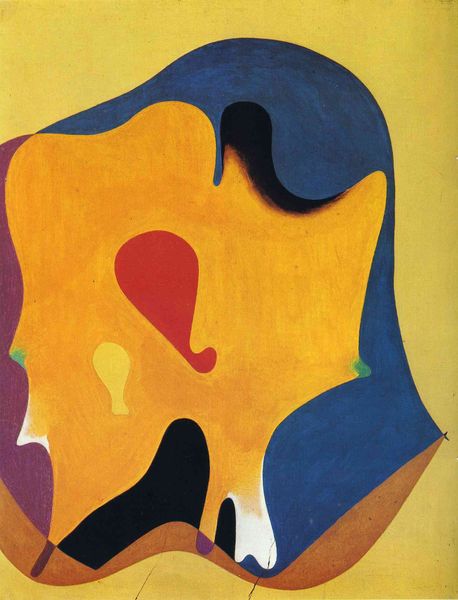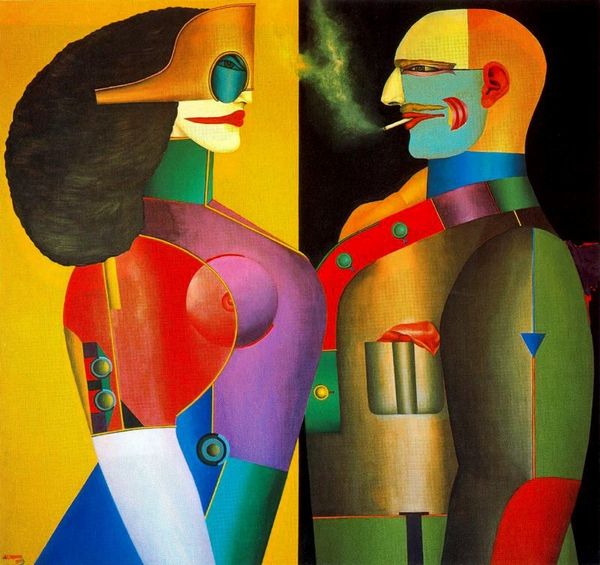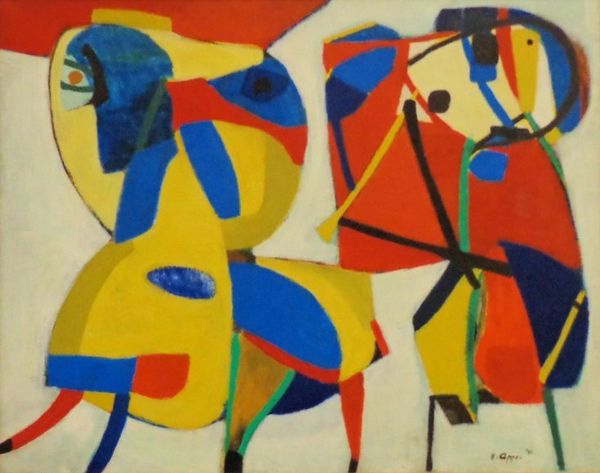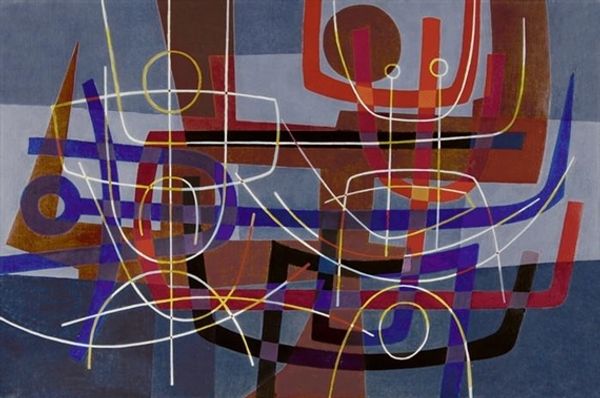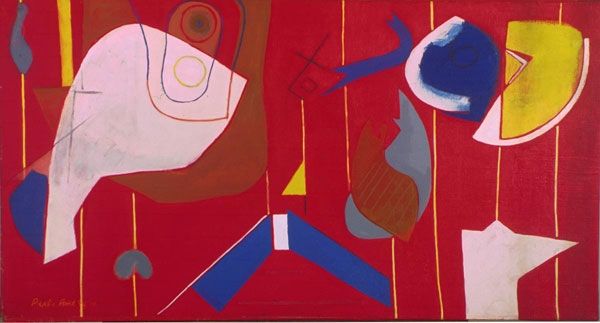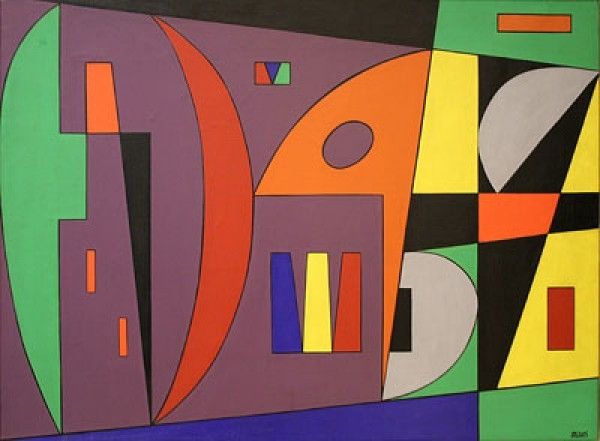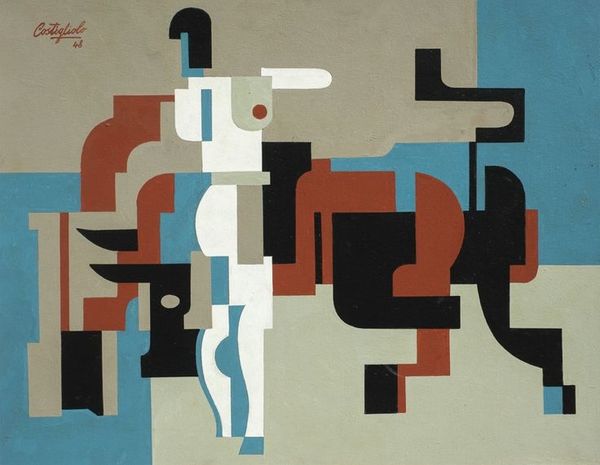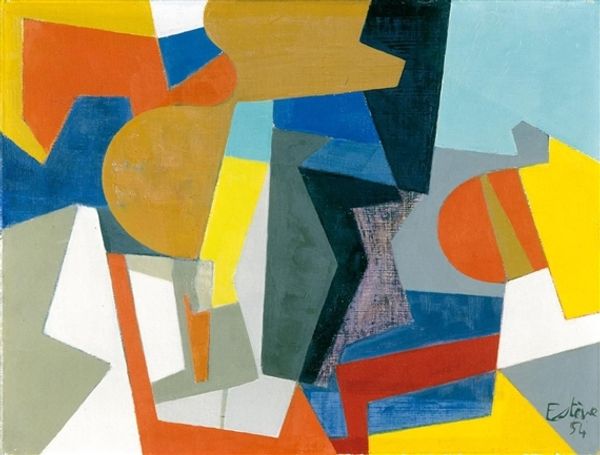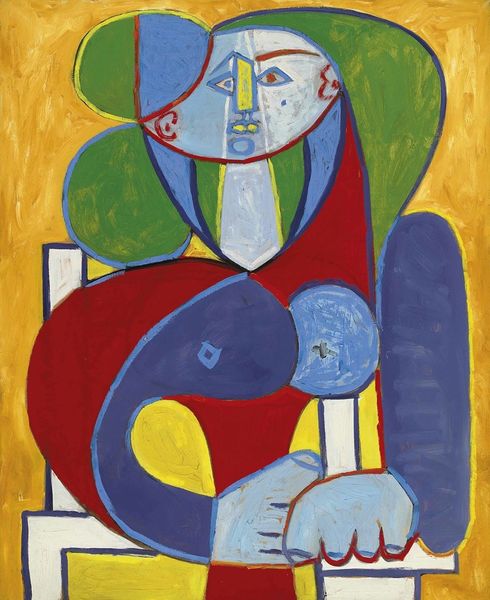
painting, acrylic-paint
#
portrait
#
painting
#
pop art
#
acrylic-paint
#
figuration
#
pop-art
#
modernism
#
erotic-art
Copyright: Richard Lindner,Fair Use
Curator: Richard Lindner's "Marilyn Was Here" immediately strikes me as unsettling. There’s a rigidity, almost a mechanical feel, to the figure that clashes with any expectations of Marilyn Monroe's image. Editor: The use of color blocking and sharp edges certainly amplifies that unsettling feeling. Looking at this acrylic painting, I wonder if the dual-toned body is making a statement about fractured identity, especially regarding how women are viewed, both publicly and privately. Lindner may be using Marilyn, a deeply sexualized star, to signify the dehumanization that accompanies celebrity. Curator: Those breast-like shapes with what appear to be camera lenses recall the voyeuristic gaze Marilyn endured. The way the composition divides the figure seems symbolic; two opposing sides, perhaps reflecting the internal struggles of a woman caught between the pressures of fame and selfhood. We also see a corset-like piece. Editor: And notice how the figure is not quite bisected down the middle, creating two offset halves. The symbolic corset-like structure seems to confine the softer side and contrasts directly with a mechanical structure. Are these opposing ideas fighting against each other? Perhaps, Lindner uses a dark and a light palette to explore how celebrity diminishes the potential for both innocence and agency. Curator: What is fascinating is that Lindner never provides the face; rather he chooses to emphasize objectification, which renders the image intensely political, highlighting the lack of control afforded to female performers. It echoes the male gaze that became so central to our cultural interpretation of the pop icon herself. Editor: Agreed. Marilyn, as a modern Venus, becomes a canvas on which cultural anxieties are projected. I keep thinking of what the artist has been trying to hint at via symbolism here, considering her iconic presence. The shapes here are like icons, and it all forms another visual language. What might be other symbolic suggestions present? Curator: Perhaps the stark contrast reflects the stark choices often presented to women in the entertainment industry even today, to conform or to disappear. Lindner forces us to confront the costs of fame, even the fame achieved by someone as celebrated as Marilyn Monroe. It makes one reflect. Editor: Indeed. Lindner's visual vocabulary truly transforms popular image into a critical commentary about image-making, offering us ways to dissect our fascination with, and, frankly, destruction of cultural icons.
Comments
No comments
Be the first to comment and join the conversation on the ultimate creative platform.
